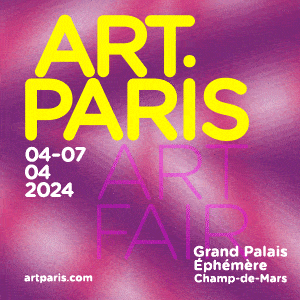Whitehot Magazine
May 2024
"The Best Art In The World"
"The Best Art In The World"
May 2024
Phantom Body: Weightless bodies, Avatars, and the end of skin
 Rute Merk. Maeve. Oil on canvas. 50.5 x 37 inches. 2019
Rute Merk. Maeve. Oil on canvas. 50.5 x 37 inches. 2019
By ANDREW PAUL WOOLBRIGHT, April 2020
Within figuration, the materiality of oil paint has been bound to its relationship to the depiction of skin. Velasquez went so far as to say that if not for skin, oil painting wouldn’t exist. This preoccupation has been typically mapped through Rembrandt’s Slaughtered Ox (1655), then Soutine’s (1925), then depending on taste- Bacon, Freud, and currently Saville. The figural connection to skin was one of weight, of a physicality channeled through hog hair brushes and piles of flake white caked to the surface of the canvas. This obsession with material skin seems to have lost its privileged position due in no small part to how incredibly realized it’s been within the traditions of western art history. There is a completeness to Freud’s Benefits Supervisor Sleeping (1995) and Saville’s surgical portraits that followed, that have made contemporary artists disregard flesh, instead pursuing a frontier that investigates the body as one that is weightless, boneless, hollow, thin, and digital- phantom bodies.
Prior to the internet, the body was always and inescapably present. Religion and mythology alone allowed for the rare dispossession of muscle and skin. The Egyptians imagined the soul as ka, an ephemeral copy of our bodies that could be operated within the zones of the afterlife upon the point of death. Christianity developed a similar understanding of an externalized body image in its concept of the soul; eternity would be explored and understood through an intangible copy of our body, which could be tortured in hell but painless and incorporeal in heaven.
It was the job and work of philosophy to separate the rational mind, the logos, from the carnal nature of the body, the corpus, influenced in part by the writings of St. Augustine and the church’s need to reject Epicurean pleasure. Aesthetically, it was Michelangelo that saw the carnality of the body as its entry point to the divine. Endlessly copying and studying the Belvedere Torso, he “scattered it across the universe” according to Henri Fuseli in a lecture given at the Royal Academy. Michelangelo understood that the torque found in the core of the body, the mass and twisting weight of it, had the ability to connect to the viewer through a sort of physical empathy. The turning flesh operated as an affective vehicle, twisting the viewer’s own body and making them complicit to the spiritual experience of Catholicism through their own muscle
In most philosophy before the 20th century, the mind was pure and always hindered by the limitations of the body. It wouldn’t be until the thinking of Merleau-Ponty that the two would be thought of not in binary terms, but as coexisting forces in our sense of corporeality; the two being inseparable and collaborative in our creation of the body image.
Much of this shift in linking the mind and body came from the psychoanalytic work of Freud and early research into phantom limbs. The body disconnected through war and trauma, specifically that of World War I, taught us about the mind’s ability and need to visualize itself. It was the rift in the totality of our form that taught us its nature- that the mind stores the sensations of touch and movement as it does them. The mind stores lines of coded sensations for our body to utilize during future actions, so much so that even when an arm is gone, the patient can feel it reaching for an object and grasping. Like a computer running maintenance checks, the phantom limb can still feel an invisible itch.
As philosophy reorders itself around a post-human and ecological understanding of being, and as the art world has subsumed the anti-art aesthetics of post-internet, the core and mass of the twisting body, the depiction of flesh rendered in thick oil paint, has lost itself to the digital body- the avatar. The body has shifted experience from the twisting core of the belevedere torso to the fingertips; and the mind and body are once again separate. The body has become weightless, lost presence, has entered into a sphere of endless modification, anonymity, endless persona, and into worlds of saved games and respawn points. What could previously only be imagined at the point of death, the experience of ka or the Christian soul, is now experienced by anyone experiencing a video game; an experience that allows for the experience of death, of trial and error, in virtual worlds that lack consequence.
In In Free Fall: A Thought Experiment on Vertical Perspective, Hito Steyerl imagines that the unifying result of one point perspective has been replaced with the topographical view. Our relation as bodies to the landscape is no longer to the horizon, but instead, to the vertical angle of the drone or the skyscraper; the body in freefall. But I would argue that the body, regardless of its political free fall, is weightless. It is not a body of bones and flesh, but one of empty space. “Skin” is an out-turned image directed and curated for the player. It is now a body without skin, one that can float above the virtual world or sink below its surface, the body that can see the map from any angle by pressing up or down on the keyboard, or experience object/body confusion through glitch. Skin and its materiality within painting seems outmoded.
There are a few variations on phantom bodies within current painting, all of which decline to engage in western art history’s relationship between flesh and paint.
Rendered skin
A group of artists have left the physical body behind and exchanged it for the virtual model. Emma Stern downloads open source 3D models of illegally young girls, overtly sexualized by their anonymous designers. Stern takes these models and attempts to give them personhood- naming them and introducing them into invented environments. At times they are chimeric- integrating animals and objects into their own 3D skin in a way that is in line with Haraway’s concept of a Cyborgian feminine. Similarly, there is Rute Merk, who is using paint to reinvestigate what seems like polygonal characters from early Playstation games. Their low res limitations are transformed by her soft, romantic brushy treatment- they are done with such gravitas and commitment that we are forced to consider them as subjects rather than dispensable. One can almost imagine a court painter living inside of a video game, Velasquez painting in pixels.
Predecessors to this rendered skin could be the likes of George Tooker or Alex Colville, artists that imagined rubberized cartoon worlds devoid of tactility, exchanged for psychological drama and force.
 Sarah Slappey. Tan Cloud. Oil on canvas. 25 x 28 inches. 2018
Sarah Slappey. Tan Cloud. Oil on canvas. 25 x 28 inches. 2018
Sensual bodies: the skin that feels, subject/object confusion
Within this group, the surface of skin is a placeholder for other material. Owing perhaps to predecessors like Judith Linhares, who preferred channeling De Kooning over feeling any particular debt to the body, these are painters who are thinking of a seductive body, a body that feels, experiences pleasure and sensuality without needing a patriarchal presence. There is Sarah Slappey, who’s rubberized, boneless figurations snake like ropes of sexual bubble gum. The hands and fingers in her painting wind and slip through each other, enjoying their own touch. It is a skin of pleasure that indulges in itself, voyeuristic to itself, feeling every shadow and curvature in its makeup. It is auto-erotic, self-indulgent, and free of the voyeuristic gaze in search of a feminist Surrealism.
Also within this resurgent Surrealism, is work that explores body-object confusion, found within the works of Katherina Olschbaur and Robin Williams. This is a skin of replacement, that reflects its material surroundings back towards the space it inhabits, confusing the delineation of subject and object and the space it occupies. As object oriented ontology and Latour’s Actor Network Theory have occupied the the stage of contemporary thought, so too have artists worked to blur the boundaries of skin, removing its bones, and introduce it into materialist play.
 Angela Dufresne. No Longer the Hazardous Forest. Oil on canvas. 11 x 7 feet. 2018
Angela Dufresne. No Longer the Hazardous Forest. Oil on canvas. 11 x 7 feet. 2018
Hollow bodies
This is a group of artists who explore the figure dematerializing in the landscape. Starting back as early as William Blake, who wanted his figures to appear hollow to advance his concepts of ecology (and out of his hatred of the concrete forms of Joshua Reynolds), these are artists who’s backgrounds compete and fight with the foreground. Angela Dufresne creates these queer and combative spaces. The background won’t take its domination by the subject lying down. Instead, it fights past the figure, the two form a phenomenological mesh, as the figuration is developed by the space it inhabits-pushing through to the positive. The figures and landscape are at times indecipherable, ecological; creating an electric soup. Caitlin Cherry similarly shows a body affected by its environment, and her work floats between the sensual body and the hollow as she flexes her expert handling of color and camouflage.
The term digital was first used in the 15th century. It referred to calculations that could be done using your ten fingers, a knowledge understood at the edges of your body. The way we speak of screens and the internet is inseparable from the constraints and understandings of the physical body, our language for it remains physical and corporeal. As the mind is freed from the weight of the body, it discovers its phantom form- finding its weightless footing in endless virtual space. WM
Thumbnail credit: Caitlin Cherry. Nukeface Leviathan. Oil on canvas. 57 x 57 inches. 2019 (left) and Emma Stern. Kinley. Oil on canvas. 68 x 50 inches. 2019 (right)

Andrew Paul Woolbright
Andrew Paul Woolbright is an artist, writer, professor, and gallerist living and working in Brooklyn, NY. He is an MFA graduate from the Rhode Island School of Design in painting and has exhibited with the Ada Gallery, Nancy Margolis, and Coherent Brussels. His Shrinebeast series, which deals with sexual kafka and love, has been reviewed in TimeOut New York, Two Coats of Paint, Artviewer, the Boston Globe, and the Chicago Reader and is currently in the collection of the RISD Museum. In March 2017, Woolbright founded the gallery Super Dutchess at 53 Orchard, an artist run gallery on the lower east side in New York. He has taught at the Rhode Island School of Design and he currently teaches at SUNY New Paltz.
view all articles from this author







